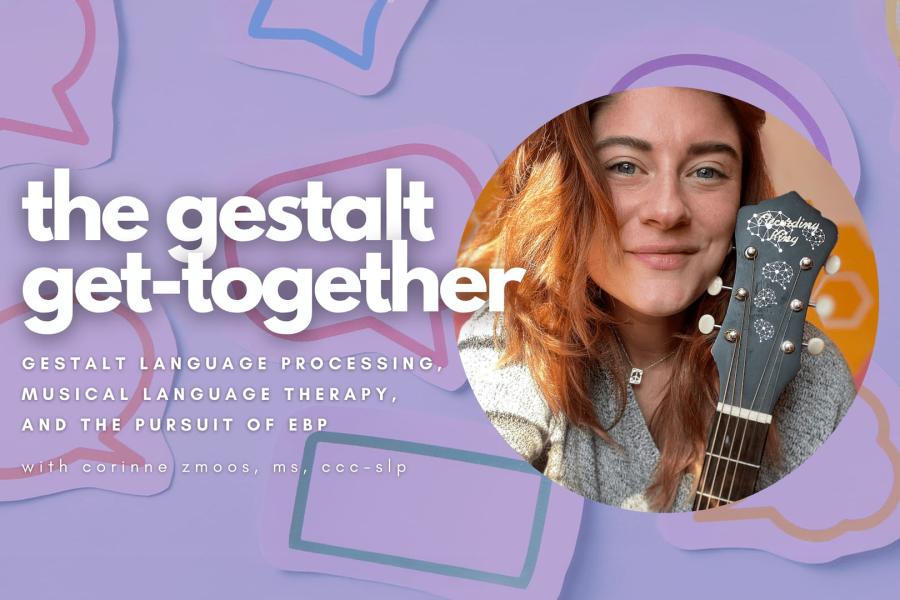If you’ve ever watched a child light up when you sing their favorite song, you already know the magic of melody. In this uplifting and eye-opening course, Melody and Memory in Autism, speech-language pathologist and musician Corinne Zmoos, MS, CCC-SLP, shows you how to harness that magic for powerful therapeutic change. With a joyful blend of heart and science, Corinne takes you on a deep dive into the world of Gestalt Language Processors (GLPs), revealing how music, especially melody, can be one of the most effective tools for connecting with autistic learners in stage one of Natural Language Acquisition (NLA).
SLPs will walk away from this course inspired by the research, but grounded in real strategies that work. You’ll learn why musical memory often outshines other types of memory in autistic children and how that insight can revolutionize the way you model language. Through stories, science, and song, Corinne shows how music taps into rich sensory memories, unlocks echolalic language, and builds bridges to generative speech. The course breaks down complex brain science into accessible ideas, reminding us that music isn’t just entertainment, it’s a language all its own, one that many GLPs understand intuitively and deeply.
Get ready to laugh, reflect, and maybe even sing a little. You’ll learn practical melodic techniques like “piggybacking” (writing new lyrics to familiar tunes), “staircase melodies” (melodic contours that mirror action or emotion), and “mountain melodies” (symmetric phrases that bring clarity and closure). These approaches aren’t just memorable, they’re fun, empowering, and deeply engaging for kids who often struggle with traditional language input.
Most of all, this course invites you to reconnect with your own creativity and curiosity. Whether you’re already incorporating music or curious to try, Melody and Memory in Autism will remind you of the joy in your work, the brilliance in your students, and the limitless potential that opens up when we dare to sing outside the lines.
SLPs will walk away from this course inspired by the research, but grounded in real strategies that work. You’ll learn why musical memory often outshines other types of memory in autistic children and how that insight can revolutionize the way you model language. Through stories, science, and song, Corinne shows how music taps into rich sensory memories, unlocks echolalic language, and builds bridges to generative speech. The course breaks down complex brain science into accessible ideas, reminding us that music isn’t just entertainment, it’s a language all its own, one that many GLPs understand intuitively and deeply.
Get ready to laugh, reflect, and maybe even sing a little. You’ll learn practical melodic techniques like “piggybacking” (writing new lyrics to familiar tunes), “staircase melodies” (melodic contours that mirror action or emotion), and “mountain melodies” (symmetric phrases that bring clarity and closure). These approaches aren’t just memorable, they’re fun, empowering, and deeply engaging for kids who often struggle with traditional language input.
Most of all, this course invites you to reconnect with your own creativity and curiosity. Whether you’re already incorporating music or curious to try, Melody and Memory in Autism will remind you of the joy in your work, the brilliance in your students, and the limitless potential that opens up when we dare to sing outside the lines.



















